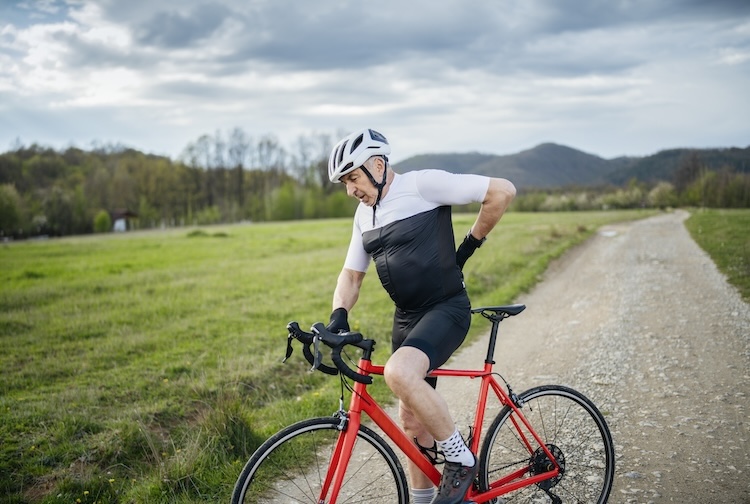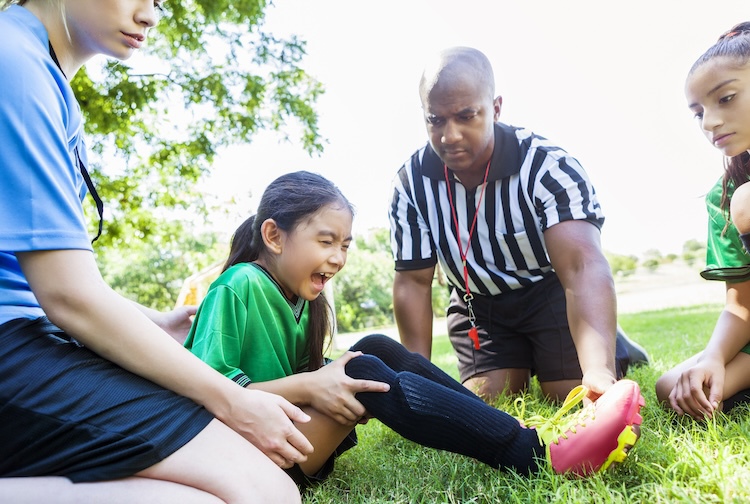
Falls, sprains and fractures: How to avoid cycling injuries
VCU Health sports medicine expert shares tips on how you can avoid common orthopaedic injuries during a bike ride.
May 28, 2024 Approximately 600,000 people are treated in emergency departments for bike-related injuries annually, according to federal health data. (Getty Images)
Approximately 600,000 people are treated in emergency departments for bike-related injuries annually, according to federal health data. (Getty Images)
By Mia Stephens
As the days become warmer and longer, more people are taking up outdoor activities after the workday ends. One of those favorite past times for nearly 30% of American households is hopping on a bike.
Seth Cheatham, M.D., medical director for VCU Health's Division of Sports Medicine and professor in the Department of Orthopaedic Surgery at Virginia Commonwealth University’s School of Medicine, is no stranger to treating cyclists. In fact, the Centers for Disease Control and Prevention estimates that 600,000 people are treated in emergency departments for bike-related injuries each year.
“If you are getting into serious cycling or going to be cycling for an extended amount of time, it is important for you to be knowledgeable about your equipment and gear,” Cheatham said. “Taking the time to get your bike fitted appropriately can go a long way to avoid problems down the road with inflammation and soft tissue injuries.”
Cheatham shared tips with VCU Health News on ways to avoid bike-related injuries.
What are the most common bike-related injuries you see in patients?
Head injuries usually account for most injuries reported, those include concussions or laceration of the head. However, cyclists can experience contusions, sprains, fractures on the wrist, shoulder and lower leg. I have also seen clavicle fractures and shoulder separations or AC joint separations just from someone falling off a bike.
What causes most of these injuries?
For most cyclists, their feet are clipped into their pedals, which makes it harder for them to avoid falls. Falling from a bike can lead to injuries to the shoulders, clavicle fractures and joint injuries where they hit their head even with a helmet on.
When it comes to mountain biking or off-road biking, the terrain is another thing to consider. In those situations, the uneven ground and trying to go over holes, ravines and rivers could also lead to injuries.
How would you distinguish a minor injury vs a major injury? At what point should someone go to the emergency room?
If you fall off your bike, there are a few key indicators you should go to the hospital:
- Experiencing pain
- A joint is deformed or in the wrong place
- Factures
- Loss of consciousness or concussion
Now, if you fall off your bike and walk away from it with minor soreness, then certainly wait to see if it gets better or worse within a week.
Some people who cycle too much may experience chronic overuse injuries, like cyclist knee. Due to constant repetition of the revolutions of the bike, people can feel pain and swelling underneath their kneecap. Like minor soreness, if it does not get better with rest and over-the-counter anti-inflammatories then it might need to be evaluated.
What does treatment and recovery look like for both major and minor injuries?
Depending on the injury, treatment can range from surgery to physical therapy or medication. For instance, if somebody has a clavicle fracture that is displaced, meaning the bones aren't lined up anymore, then surgery would be needed to put a plate and screws on it. In those situations, it may take a few months before a patient is fully recovered to get back to riding.
If it’s a minor sprain, strain or overuse injury, then we would try to treat those without surgery. A patient would go to physical therapy, take an anti-inflammatory medication for a period of time or their bike may be modified to prevent reoccurring injuries. For example, the seat, height and the location of the handlebars can cause people to have neck and back problems. Sometimes we send people to a professional bicycle shop where they can be fitted appropriately for their bike, which would hopefully decrease overuse or malposition type injuries.
How can I prevent injuries while riding a bike?
It is important for cyclists to warm up and cool down appropriately to avoid injury. You do not want to just necessarily, jump on the bike and go for a 50-mile ride. However, I advise cyclists to gradually increase their workload because cycling is a relatively low-impact activity, but to avoid overuse injuries. It is good to build up to whatever your ultimate goal is and not just go at it all at once.
There are lots of nuances when it comes to a bike’s build in relation to the rider, such as the seat height and position as well as the handlebar height. I recommend getting your bike fitted at a store where people who are really knowledgeable about cycling can look at whatever bike you have and get it adjusted to your size appropriately.
Besides helmets, what are some other types of equipment I can wear to prevent cycling injuries?
For long-distance biking, I advise patients to wear appropriate shorts that are well padded. People can experience injuries simply from riding on the seat because it compresses a nerve in your groin area or can even cause sores. So, you want to make sure that you have the appropriate clothing.
Helmets are important, however, elbow pads and knee pads aren’t typically necessary when cycling.
Other basic things such as wearing sunscreen are important especially if biking for an extended amount of time, as well as reflective gear like lights or a vest to make yourself more visible. Whether it's the time of day or it's foggy and raining, when visibility is not good, you need more gear to make yourself as visible to possible avoid accidents.



